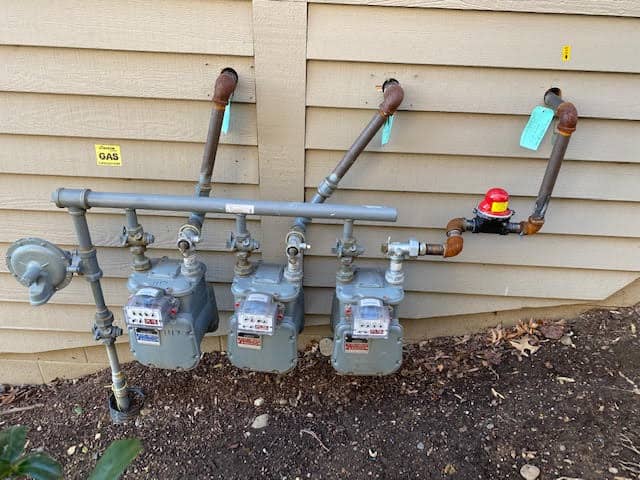Campus vending machines
by Robert Mumby
Do you ever get an Inconvenient Craving? An overwhelming desire for a snack when the cupboard is bare and all of the venues that serve or sell food are closed? If so, fear not — all of the main buildings have vending machines tucked away somewhere so that people can find a candy bar or soft drink or packet of Cheesie Crunchies when the need arises. Since residents may not be familiar with their locations, pictures and directions are given below.
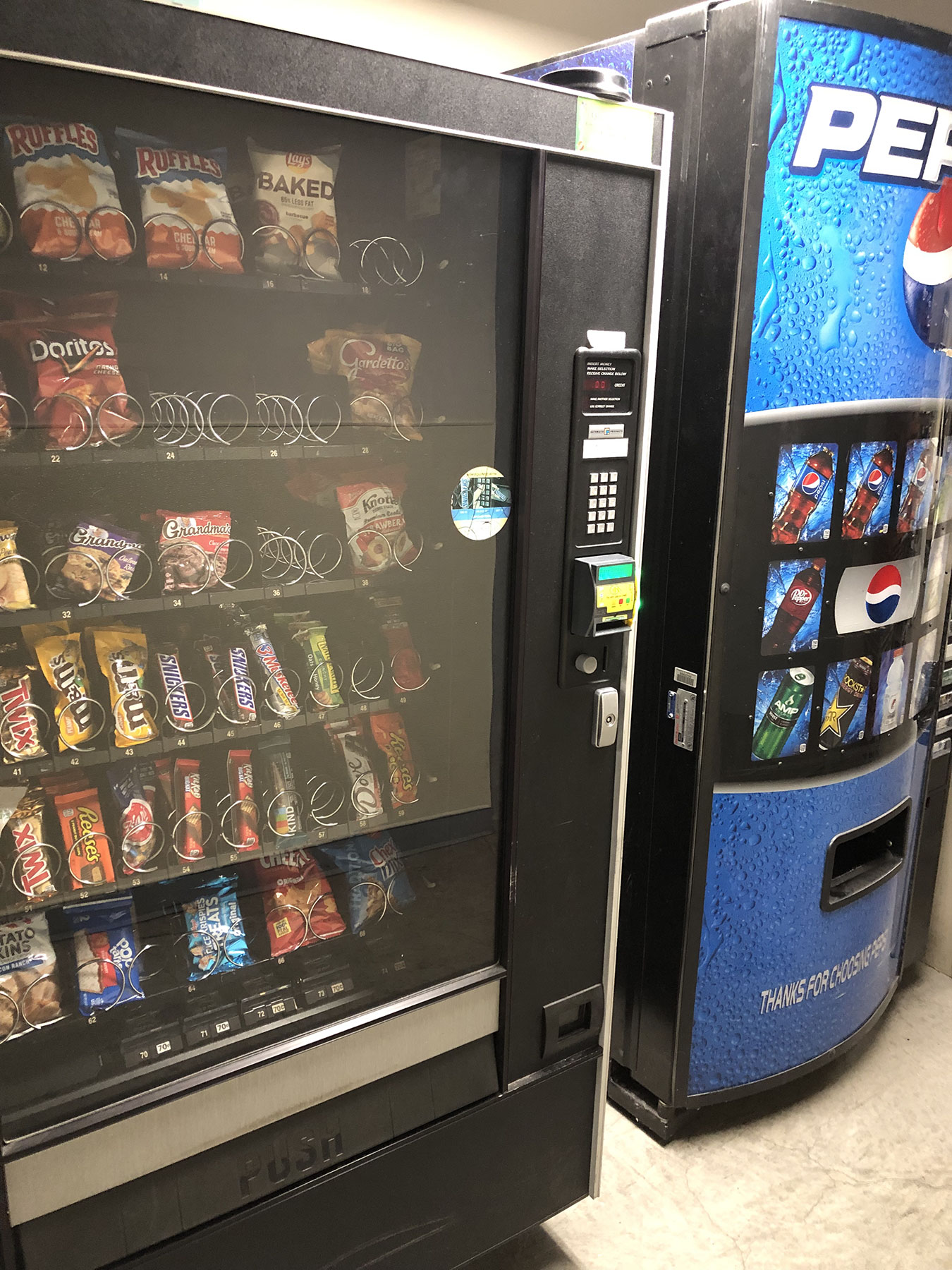
Above: Machines near the Terrace Resident Storage area.
Terrace directions: Go in the clinic entrance or take the elevator down to the lower level. Immediately next to the elevator on the West side of the hall is a door labeled Resident Storage. Go in and go straight ahead. When you reach a T-intersection, turn right. The machines (both snack and beverage) will be on your right as you walk North down the hall.
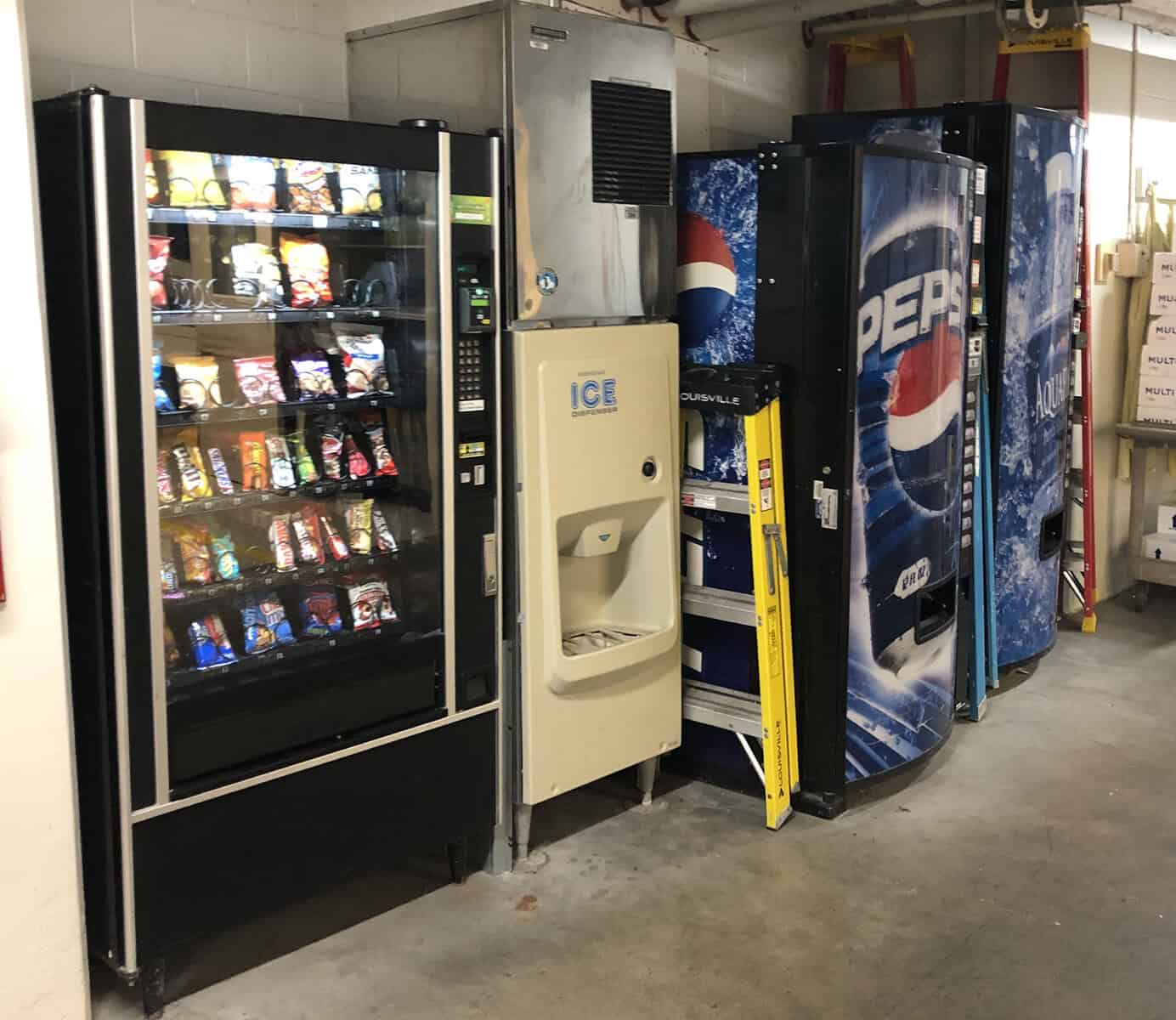 Manor directions: Take the main elevator to the ground floor. Turn left out of the elevator, left again into the hall, and left once more through the double doors at the end of the row of resident mailboxes. Snack, beverage, and ice machines are along the left wall.
Manor directions: Take the main elevator to the ground floor. Turn left out of the elevator, left again into the hall, and left once more through the double doors at the end of the row of resident mailboxes. Snack, beverage, and ice machines are along the left wall.
Manor ground floor, laundry & loading dock
 Plaza Directions: Go to the south end of the first floor, then through the unmarked double doors to the left of the Rogue Room entry. The freight elevator will be to your right; take it down one floor. The beverage machine will be visible outside the ground floor elevator door.
Plaza Directions: Go to the south end of the first floor, then through the unmarked double doors to the left of the Rogue Room entry. The freight elevator will be to your right; take it down one floor. The beverage machine will be visible outside the ground floor elevator door.
To access the snack machine, go through the door to the loading dock, cross the back end of the loading doick eastward, then turn right to the Employee Break Room.
Plaza ground floor by the freight elevator

Snack Vending Machine in Plaza employee break room at NE corner of loading dock
Golf Course Beverage Machine: On the east side of Rogue Valley Manor Drive, just north of unit 2418 and the intersection of RVM Drive and lower
Quail Point Circle, there is a row of golf cart garages. At the east end of that row, near the 4th hole, are restrooms and a beverage machine.
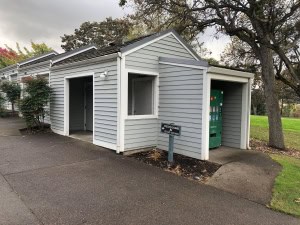
Drink vending machine and restrooms next to the golf course.

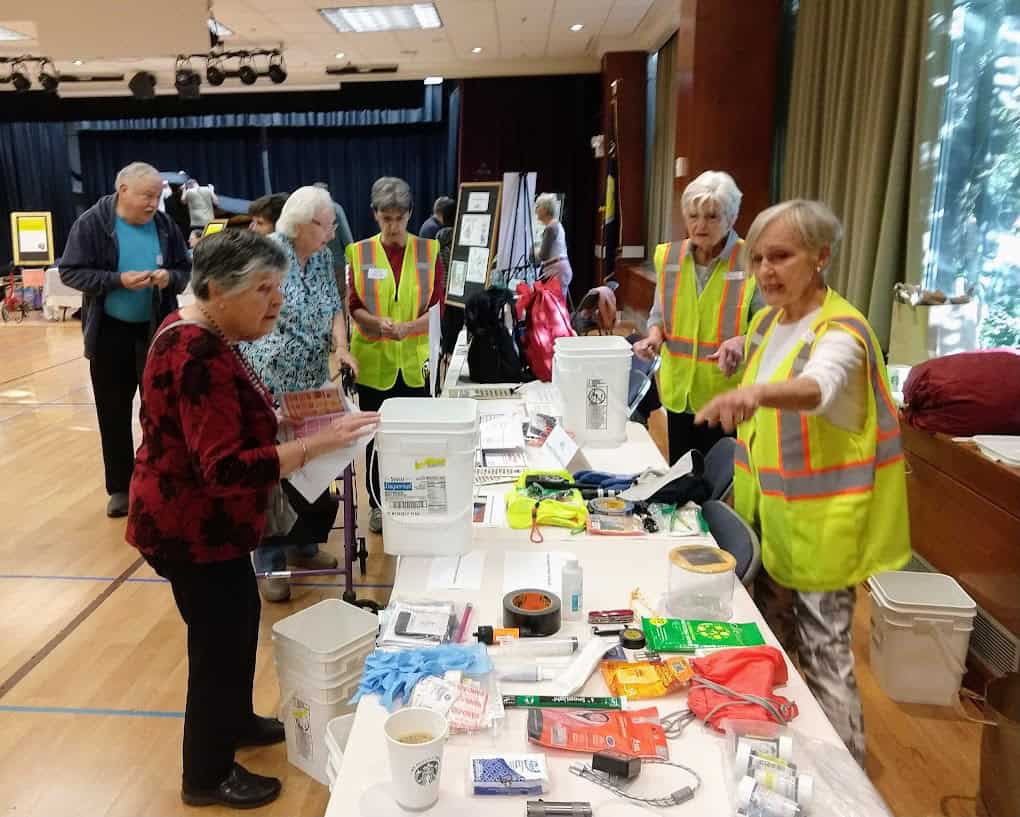 Opportunity Faire was just that — an opportunity to advertise and inform about Preparedness. A team headed by Channing Penna and consisting of Ann Rizzolo, Julie Mahoney, Vicki Gorrell, Margie Berger, and Bob Buddemeier set up displays and organized giveaways and a lottery to attract interest and attention.
Opportunity Faire was just that — an opportunity to advertise and inform about Preparedness. A team headed by Channing Penna and consisting of Ann Rizzolo, Julie Mahoney, Vicki Gorrell, Margie Berger, and Bob Buddemeier set up displays and organized giveaways and a lottery to attract interest and attention.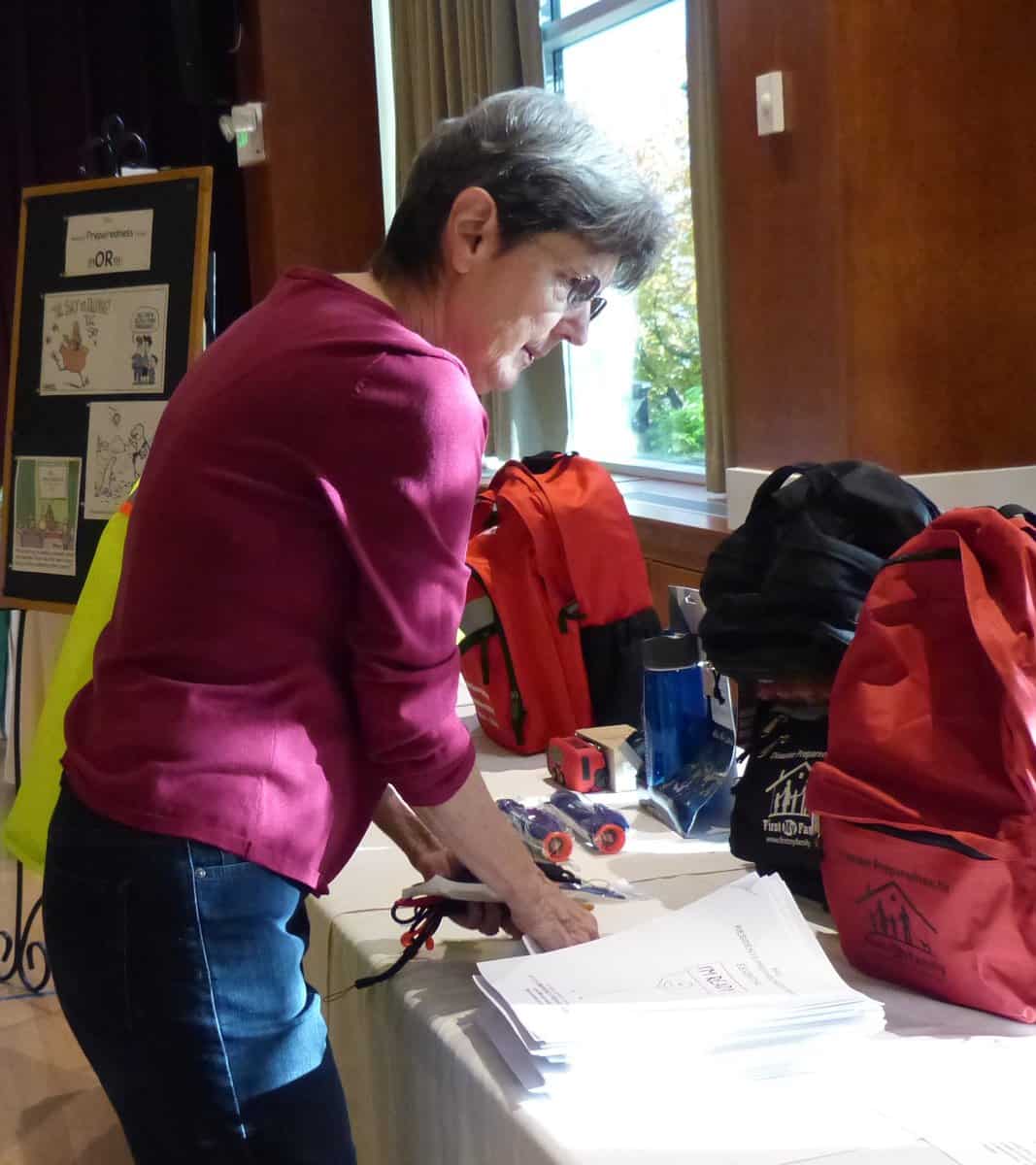 A major draw for the display was the abundance of goodies available — the freebies included the plastic pails, informational bookmarks, and wrist lanyards so that people who need two hands in the dark don’t have to hold their flashlights in their mouths.
A major draw for the display was the abundance of goodies available — the freebies included the plastic pails, informational bookmarks, and wrist lanyards so that people who need two hands in the dark don’t have to hold their flashlights in their mouths.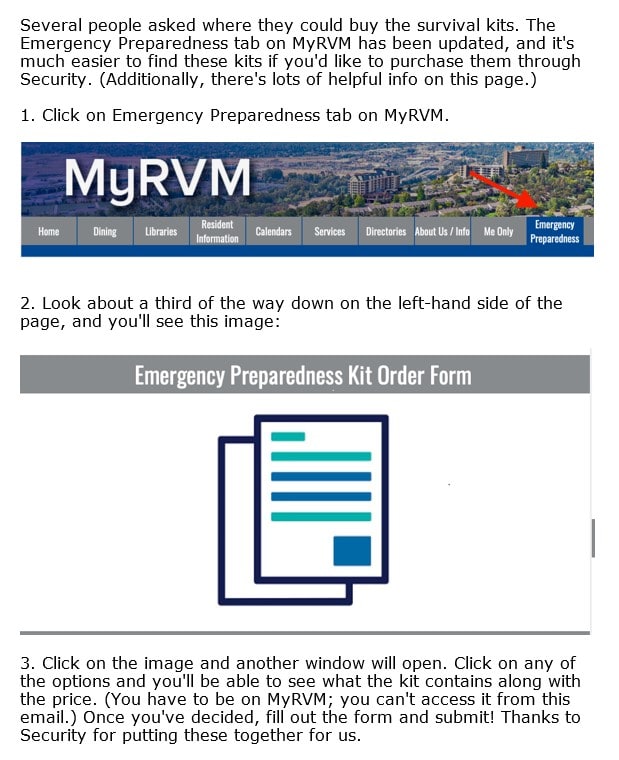 All in all, the RPG team felt that this was a very successful effort, introducing more people to RPG and to preparedness needs and opportunities. The displays were a big help, both in gaining attention and in explanations. One lesson learned was that the amount of material could be a bit overwhelming for novices; we will work on providing more focused displays and explanations in the future.
All in all, the RPG team felt that this was a very successful effort, introducing more people to RPG and to preparedness needs and opportunities. The displays were a big help, both in gaining attention and in explanations. One lesson learned was that the amount of material could be a bit overwhelming for novices; we will work on providing more focused displays and explanations in the future.
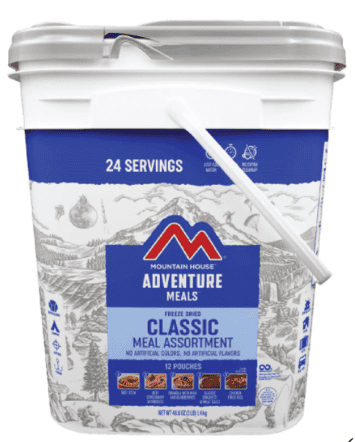
 items not requiring cooking can be eaten over a period of a few days.
items not requiring cooking can be eaten over a period of a few days.